The Notebooks of Paul Brunton volume 4, part 2
The Body By Paul Brunton

Retail/cover price: $16.95
Our price : $13.56
(You save $3.39!)
About this book:
The Notebooks of Paul Brunton volume 4, part 2
The Body
by Paul Brunton
A balanced approach to developing the physical body's potential to express divine forces . . .
Subjects: Spirituality, Mindbodywork
5.75 x 8.5, softcover
(hardcover out of stock)
160 pages
ISBN 10: 0-943914-20-5
ISBN 13: 978-0-943914-20-6
Book Details
"The body is as much a divine projection as the planet on which it dwells." —Paul Brunton
The Body offers a practical course in reducing physical obstacles that retard progress in meditation and obstruct the unfolding of spiritual intuition and/or stabilizing higher awareness. As such, it also provides a balanced approach to developing the physical body's potential to express divine forces
Note: In the cloth edition, Parts 1 and 2 of Volume 4 are bound together as Meditation/The Body, which is currently out of stock.
Category Five: THE BODY
INTRODUCTION
1. PREFATORY
2. THE BODY
3. DIET
Comments on customs
4. FASTING
5. EXERCISE
6. BREATHING EXERCISES
7. SEX AND GENDER
8. KUNDALINI
9. POSTURES FOR PRAYER
“. . . a veritable treasure-trove of philosophic-spiritual wisdom.” —Elisabeth Kubler-Ross
“. . . sensible and compelling. His work can stand beside that of such East-West bridges as Merton, Huxley, Suzuki, Watts, and Radhakrishnan. It should appeal to anyone concerned personally and academically with issues of spirituality.” —Choice
“Vigorous, clear-minded and independent . . . a synthesis of Eastern mysticism and Western rationality. . . A rich volume.” —Library Journal
“. . . a great gift to us Westerners who are seeking the spiritual.” —Charles T. Tart
“A person of rare intelligence. . . thoroughly alive, and whole in the most significant, 'holy' sense of the word.” —Yoga Journal
For more reviews of the Notebooks series, click here
The Body is a balanced course in perceiving and perfecting the physical body's potential to become an outward expression of the divine force within. All its exercises, breathings, hygienic and dietary suggestions have a twofold intention: (1) to make easier one's progress in the development of intuition and the deepening of meditation, and (2) to assure physical, psychological, and spiritual safety in the process of awakening and directing the spirit-energy dormant within the unregenerated physical organism. With the ultimate goal of successfully transmuting the energy that appears (on its lowest level) as sexuality, it presents a sane and effective graduated sexual ethic corresponding to individual levels of development and spiritual commitment. It also explores and compares some of the differing problems and advantages, with respect to spiritual practice and development, that nature bestows along with the biological organization distinguishing men and women.
With respect to this last point, it is advisable to establish a context for individual paras or sentences in the text that may evoke inappropriate responses in some readers. The material on this issue has been thoughtfully reviewed by numerous readers of both genders. What remains that may seem critical of either gender is being published because those readers found the remarks directed toward specific problems of their own biological gender to be very helpful in understanding — and in some cases freeing them from anxiety about — difficulties which they have experienced in their own practice. It should also be observed that these remarks are made by a widely traveled individual with a global perspective on spiritual practice. That some of them may not be entirely applicable in parts of the American and western European cultures now experiencing a certain amount of psycho-sexual homogenization, does not yet thereby invalidate them. At some inner level, we are all both male and female: The interior opportunities, and obstacles, of each gender must be understood if we are to progress.
Finally, the more essential point behind these potentially controversial statements, the point not to be missed or misunderstood, is that neither intellectual metaphysics nor devotional mysticism by itself constitutes the philosophical goal of the spiritual quest. Regardless of which of these two aspects one's disposition favors, only the harmonious complementary development and creative union of both these sides of the human nature issues in that ultimate goal.
With respect to the exercises, purifications, and dietary recommendations in The Body, it is, of course, necessary to point out that no one with any condition requiring a physician's attention should undertake any program of exercise, diet, or physical purification without qualified medical supervision. P.B. has written several warnings into this category of The Notebooks, the publisher has highlighted many of them, we hope that readers will give them due regard.
Editorial conventions here are the same as explained in the introductions to Perspectives and The Quest. Likewise, (P) at the end of a para indicates that it also appears in Perspectives, the introductory volume to this series.
PREFATORY
IN THE HUMAN BODY there is at one and the same time a projection of the Overself and a channel for it. The wisdom and intelligence which have gone into and are hidden behind the whole universe have gone into the human body, too. To ignore it, as some mystics try to do — and vainly — or to deny its existence, as others even more foolishly do, is to ignore God and deny the soul. The student of philosophy cannot do that. His outlook must be an integral one, must take in what is the very basis of his earthly existence, must be a balanced one.
From chapter 2, THE BODY
1
Buddha ascetically turned in disgust from the human body. He could see it only as an assemblage of loathsome elements. Plato artistically turned towards it in joy. He received inspiration through its beauty. Neither Indian nor Greek was quite right nor quite wrong. Each deliberately unveiled only a part of the picture. Whoever wishes to see the whole picture must put together both the bright top part and the dark lower part. He must comprehend that the body is doomed to decay and die but that its informing life is destined to grow into grandeur. Thus the finite form becomes a portal to the infinite reality.
2
The body is not to be despised with the ascetic nor neglected with the mystic. It is to be understood and rightly used. It is to be cared for as one of the instruments whose total contribution will enable us to fulfil the spiritual purpose of life on earth.
3
We use our minds and our bodies badly. And we do this through ignorance, through the lack of instruction on their proper use. The right use of the body and the correct provision of its needs are arts to be learned. The civilized man is not born with them. He is the unfortunate hereditary victim of generations of faulty modern habits. There is a better way to use the bodily mechanism than the habitual one of most Westerners. Philosophy, knowing the mind-body relationship, is just as applicable to such apparently simple and trivial — but hygienically and psychologically important — matters as our use of this mechanism in sitting, walking, standing, breathing, and even bending. It prescribes wise rules for living, eating, and drinking.
4
Knowing the laws of mental and physical hygiene and obeying them will make him a better student of truth than will being ignorant of them.
5
How many, who recognize truth when it deals with metaphysical and mystical subjects, cannot recognize it when it deals with physical regimes! If we ask why this should be so, the answer is to be sought in the power of prevalent custom and inherited habit.
6
The body's presence and activity, importance and influence, its demands for health and strength and care, can be ignored in his experience only for a short time. Sooner or later he must turn to notice them, and if he seeks meaning, to account for them.
7
We need the body — all of us, not materialists nor ordinary persons only — therefore we must respect it. It is with the ears that we listen to Beethoven: that is, with the body. It is with the eyes that we read beautiful poetry: again with the body. Let us not decry the body.
From chapter 8, KUNDALINI
2
Why did so many primeval cultures in Asia, Africa, and America worship the serpent? A full answer would contain some of the most important principles of metaphysics and one of the least known practices of mysticism — raising the force symbolized under the name of the "serpent fire." The advanced occultists of Tibet compare the aspirant making this attempt to a snake which is made to go up a hollow bamboo. Once aroused, it must either ascend and reach liberty at the top or it must fall straight down to the bottom. So he who seeks to play with this fiery but dangerous power will either reach Nirvana or lose himself in the dark depths of hell. If a man seeks to arouse kundalini before he has rid himself of hate, he will only become the victim of his own hatreds when he does raise it from its sleeping state. He would do better to begin by self-purification in every way if he is to end in safety and with success. The uprising of the penis closely resembles the uprearing of the cobra. Both become erect and stiff by their own innate force. When the serpent fire passes from the root of the penis up the spinal cord, the latter also becomes upright and stiff. Yet sex is not the serpent power but the chief one of its several expressions. The advanced yogis of India symbolize by the pent-up hissing of the serpent the aggressive energy of this sex power. They picture the threefold character of the process in their texts as a triangle with a serpent coiled up inside it. The intense fire of love for the higher self must be kindled in the "mystic" heart, kindled until it also shows a physical parallel in the body, until the latter's temperature rises markedly and the skin perspires profusely. Deep breathing is an important element in this exercise. It provides in part the dynamism to make its dominating ideas effective. The other part is provided by a deliberate sublimation of sex energy, through its imaginative raising from the organs in the lower part of the body to a purified state in the head.
The strange phenomena of a mysterious agitation in the heart and an internal trembling in the solar plexus, of sex force raised through the spine to the head in intense aspiration toward the higher self accompanied by deep breathing, of a temporary consciousness of liberation from the lower nature, are usually the forerunners of a very important step forward in the disciple's inner life. A twofold trembling may seize him. Physically, his diaphragm may throb violently, the movement spreading like a ripple upward to the throat. Emotionally, his whole being may be convulsed with intense sobbing. It is this same bodily agitation, this nervous repercussion of a higher emotional upheaval, which developed in the meetings of the early members of the Society of Friends and got them the name of Quakers. The agitation of his feeling will come to an end with the calm perception of his Soul. The kundalini's activity being primarily mental and emotional, the diaphragmatic tremors and quivers are merely its physical reactions. The necessity for keeping the back erect exists only in this exercise, not in the devotional or intellectual yogas, for such a straight posture permits the spinal column to remain free for the upward passage of the "serpent fire." The latter moves in spiral fashion, just like the swaying of a cobra, generating heat in the body at the same time. If the trembling continues long enough and violently enough, a sensation of heat is engendered throughout the body and this in turn engenders profuse perspiration. But all these symptoms are preliminary and the real mystical phenomena involving withdrawal from the body-thought begin only when they have subsided. This exercise first isolates the force residing in breath and sex, then sublimates and reorients it. The results, after the initial excitement has subsided, are (a) a liberating change in his consciousness of the body, (b) a strengthening development of the higher will's control over the animal appetites, and (c) a concentration of attention and feeling as perfect as a snake's concentration on its prey. It is a threefold process yielding a threefold result. In those moments when the force is brought into the head, he feels himself to be liberated from the rule of animality; then he is at the topmost peak of the higher will. Power and joy envelop him. The attainment of this state of deep contemplation and its establishment by unremitting daily repetition bring him finally to an exalted satisfied sense of being full and complete and therefore passion-free and peace-rooted.(P)
In his own words:
“Writing, which is an exercise of the intellect to some, is an act of worship to me. I rise from my desk in the same mood as that in which I leave an hour of prayer in an old cathedral, or of meditation in a little wood . . .” —from Perspectives, volume 1 in The Notebooks of Paul Brunton, p. 143
“P.B. as a private person does not count. There are hundreds of millions of such persons anyway. What is one man and his quest? P.B.’s personal experiences and views are not of any particular importance or special consequence. What happens to the individual man named P.B. is a matter of no account to anyone except himself. But what happens to the hundreds of thousands of spiritual seekers today who are following the same path that he pioneered is a serious matter and calls for prolonged consideration. Surely the hundreds of thousands of Western seekers who stand behind him and whom indeed, in one sense, he represents, do count. P.B. as a symbol of the scattered group of Western truth-seekers who, by following his writings so increasingly and so eagerly, virtually follow him also, does count. He personifies their aspirations, their repulsion from materialism and attraction toward mysticism, their interest in Oriental wisdom and their shepherdless state. As a symbol of this Western movement of thought, he is vastly greater than himself. In his mind and person the historic need for a new grasp of the contemporary spiritual problem found a plain-speaking voice . . .” —from Perspectives, volume 1 in The Notebooks of Paul Brunton, p. 145
Learn more about Paul Brunton through articles at the Paul Brunton Philosophic Foundation web site
Ebook
Electronic versions of this book are available from all major (Amazon Kindle, Barnes & Noble, Apple, Kobo, etc.) and most smaller ebook vendors. Please don't try to order ebooks directly from us, as we are not yet able to deliver anything to you in a preferred electronic format.
Hardcover
We are currently out of stock of this volume in hardcover.
To see all our Paul Brunton titles, scroll down to The Complete Paul Brunton Opus below.
To see and/or order individual volumes in The Notebooks of Paul Brunton, hover your mouse over the specific cover in the Notebooks section of Complete Paul Brunton Opus below, then click on Details in the box that appears within it.
Click here to see or order the complete set of The Notebooks of Paul Brunton.
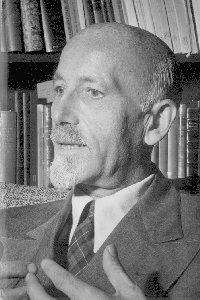
Paul Brunton helps us hear the melody behind the medley of today's "spiritual marketplace." His late writings raise the bar for what we can expect of spiritual teachings and teachers, and what we can do for ourselves. Born in London in 1898, he soon became a leading pioneer of much of what we now take for granted. He traveled widely throughout the world (long before it was fashionable) to meet living masters of various traditions with whom he then lived and studied. His eleven early books from 1934–1952 shared much of what he learned, and helped set the stage for dramatic east-west exchanges of the late 20th century. Paul Brunton left more than 10,000 pages of enormously helpful new work in notebooks he reserved for posthumous publication, much of which is now available as The Notebooks of Paul Brunton. See "The Complete Paul Brunton Opus" in blue below to see his many works available on this site. You can also search on Paul Brunton in the search bar to browse the selections, or click on a link below for specific connections.
Click here for an article about Paul Brunton.
Click here for The Notebooks of Paul Brunton.
To access small theme-based books compiled from Paul Brunton's writings, scroll down to Derived from the Notebooks below.
To access Paul Brunton's early writings, published from 1934–1952, scroll down to Paul Brunton's Early Works below.
To access commentaries on Paul Brunton and his work by his leading student, Anthony Damiani, as well as other writings about Paul Brunton and/or his work, scroll down to Commentaries and Reflections on Paul Brunton and His Work below.
Book Details
"The body is as much a divine projection as the planet on which it dwells." —Paul Brunton
The Body offers a practical course in reducing physical obstacles that retard progress in meditation and obstruct the unfolding of spiritual intuition and/or stabilizing higher awareness. As such, it also provides a balanced approach to developing the physical body's potential to express divine forces
Note: In the cloth edition, Parts 1 and 2 of Volume 4 are bound together as Meditation/The Body, which is currently out of stock.
Category Five: THE BODY
INTRODUCTION
1. PREFATORY
2. THE BODY
3. DIET
Comments on customs
4. FASTING
5. EXERCISE
6. BREATHING EXERCISES
7. SEX AND GENDER
8. KUNDALINI
9. POSTURES FOR PRAYER
“. . . a veritable treasure-trove of philosophic-spiritual wisdom.” —Elisabeth Kubler-Ross
“. . . sensible and compelling. His work can stand beside that of such East-West bridges as Merton, Huxley, Suzuki, Watts, and Radhakrishnan. It should appeal to anyone concerned personally and academically with issues of spirituality.” —Choice
“Vigorous, clear-minded and independent . . . a synthesis of Eastern mysticism and Western rationality. . . A rich volume.” —Library Journal
“. . . a great gift to us Westerners who are seeking the spiritual.” —Charles T. Tart
“A person of rare intelligence. . . thoroughly alive, and whole in the most significant, 'holy' sense of the word.” —Yoga Journal
For more reviews of the Notebooks series, click here
The Body is a balanced course in perceiving and perfecting the physical body's potential to become an outward expression of the divine force within. All its exercises, breathings, hygienic and dietary suggestions have a twofold intention: (1) to make easier one's progress in the development of intuition and the deepening of meditation, and (2) to assure physical, psychological, and spiritual safety in the process of awakening and directing the spirit-energy dormant within the unregenerated physical organism. With the ultimate goal of successfully transmuting the energy that appears (on its lowest level) as sexuality, it presents a sane and effective graduated sexual ethic corresponding to individual levels of development and spiritual commitment. It also explores and compares some of the differing problems and advantages, with respect to spiritual practice and development, that nature bestows along with the biological organization distinguishing men and women.
With respect to this last point, it is advisable to establish a context for individual paras or sentences in the text that may evoke inappropriate responses in some readers. The material on this issue has been thoughtfully reviewed by numerous readers of both genders. What remains that may seem critical of either gender is being published because those readers found the remarks directed toward specific problems of their own biological gender to be very helpful in understanding — and in some cases freeing them from anxiety about — difficulties which they have experienced in their own practice. It should also be observed that these remarks are made by a widely traveled individual with a global perspective on spiritual practice. That some of them may not be entirely applicable in parts of the American and western European cultures now experiencing a certain amount of psycho-sexual homogenization, does not yet thereby invalidate them. At some inner level, we are all both male and female: The interior opportunities, and obstacles, of each gender must be understood if we are to progress.
Finally, the more essential point behind these potentially controversial statements, the point not to be missed or misunderstood, is that neither intellectual metaphysics nor devotional mysticism by itself constitutes the philosophical goal of the spiritual quest. Regardless of which of these two aspects one's disposition favors, only the harmonious complementary development and creative union of both these sides of the human nature issues in that ultimate goal.
With respect to the exercises, purifications, and dietary recommendations in The Body, it is, of course, necessary to point out that no one with any condition requiring a physician's attention should undertake any program of exercise, diet, or physical purification without qualified medical supervision. P.B. has written several warnings into this category of The Notebooks, the publisher has highlighted many of them, we hope that readers will give them due regard.
Editorial conventions here are the same as explained in the introductions to Perspectives and The Quest. Likewise, (P) at the end of a para indicates that it also appears in Perspectives, the introductory volume to this series.
PREFATORY
IN THE HUMAN BODY there is at one and the same time a projection of the Overself and a channel for it. The wisdom and intelligence which have gone into and are hidden behind the whole universe have gone into the human body, too. To ignore it, as some mystics try to do — and vainly — or to deny its existence, as others even more foolishly do, is to ignore God and deny the soul. The student of philosophy cannot do that. His outlook must be an integral one, must take in what is the very basis of his earthly existence, must be a balanced one.
From chapter 2, THE BODY
1
Buddha ascetically turned in disgust from the human body. He could see it only as an assemblage of loathsome elements. Plato artistically turned towards it in joy. He received inspiration through its beauty. Neither Indian nor Greek was quite right nor quite wrong. Each deliberately unveiled only a part of the picture. Whoever wishes to see the whole picture must put together both the bright top part and the dark lower part. He must comprehend that the body is doomed to decay and die but that its informing life is destined to grow into grandeur. Thus the finite form becomes a portal to the infinite reality.
2
The body is not to be despised with the ascetic nor neglected with the mystic. It is to be understood and rightly used. It is to be cared for as one of the instruments whose total contribution will enable us to fulfil the spiritual purpose of life on earth.
3
We use our minds and our bodies badly. And we do this through ignorance, through the lack of instruction on their proper use. The right use of the body and the correct provision of its needs are arts to be learned. The civilized man is not born with them. He is the unfortunate hereditary victim of generations of faulty modern habits. There is a better way to use the bodily mechanism than the habitual one of most Westerners. Philosophy, knowing the mind-body relationship, is just as applicable to such apparently simple and trivial — but hygienically and psychologically important — matters as our use of this mechanism in sitting, walking, standing, breathing, and even bending. It prescribes wise rules for living, eating, and drinking.
4
Knowing the laws of mental and physical hygiene and obeying them will make him a better student of truth than will being ignorant of them.
5
How many, who recognize truth when it deals with metaphysical and mystical subjects, cannot recognize it when it deals with physical regimes! If we ask why this should be so, the answer is to be sought in the power of prevalent custom and inherited habit.
6
The body's presence and activity, importance and influence, its demands for health and strength and care, can be ignored in his experience only for a short time. Sooner or later he must turn to notice them, and if he seeks meaning, to account for them.
7
We need the body — all of us, not materialists nor ordinary persons only — therefore we must respect it. It is with the ears that we listen to Beethoven: that is, with the body. It is with the eyes that we read beautiful poetry: again with the body. Let us not decry the body.
From chapter 8, KUNDALINI
2
Why did so many primeval cultures in Asia, Africa, and America worship the serpent? A full answer would contain some of the most important principles of metaphysics and one of the least known practices of mysticism — raising the force symbolized under the name of the "serpent fire." The advanced occultists of Tibet compare the aspirant making this attempt to a snake which is made to go up a hollow bamboo. Once aroused, it must either ascend and reach liberty at the top or it must fall straight down to the bottom. So he who seeks to play with this fiery but dangerous power will either reach Nirvana or lose himself in the dark depths of hell. If a man seeks to arouse kundalini before he has rid himself of hate, he will only become the victim of his own hatreds when he does raise it from its sleeping state. He would do better to begin by self-purification in every way if he is to end in safety and with success. The uprising of the penis closely resembles the uprearing of the cobra. Both become erect and stiff by their own innate force. When the serpent fire passes from the root of the penis up the spinal cord, the latter also becomes upright and stiff. Yet sex is not the serpent power but the chief one of its several expressions. The advanced yogis of India symbolize by the pent-up hissing of the serpent the aggressive energy of this sex power. They picture the threefold character of the process in their texts as a triangle with a serpent coiled up inside it. The intense fire of love for the higher self must be kindled in the "mystic" heart, kindled until it also shows a physical parallel in the body, until the latter's temperature rises markedly and the skin perspires profusely. Deep breathing is an important element in this exercise. It provides in part the dynamism to make its dominating ideas effective. The other part is provided by a deliberate sublimation of sex energy, through its imaginative raising from the organs in the lower part of the body to a purified state in the head.
The strange phenomena of a mysterious agitation in the heart and an internal trembling in the solar plexus, of sex force raised through the spine to the head in intense aspiration toward the higher self accompanied by deep breathing, of a temporary consciousness of liberation from the lower nature, are usually the forerunners of a very important step forward in the disciple's inner life. A twofold trembling may seize him. Physically, his diaphragm may throb violently, the movement spreading like a ripple upward to the throat. Emotionally, his whole being may be convulsed with intense sobbing. It is this same bodily agitation, this nervous repercussion of a higher emotional upheaval, which developed in the meetings of the early members of the Society of Friends and got them the name of Quakers. The agitation of his feeling will come to an end with the calm perception of his Soul. The kundalini's activity being primarily mental and emotional, the diaphragmatic tremors and quivers are merely its physical reactions. The necessity for keeping the back erect exists only in this exercise, not in the devotional or intellectual yogas, for such a straight posture permits the spinal column to remain free for the upward passage of the "serpent fire." The latter moves in spiral fashion, just like the swaying of a cobra, generating heat in the body at the same time. If the trembling continues long enough and violently enough, a sensation of heat is engendered throughout the body and this in turn engenders profuse perspiration. But all these symptoms are preliminary and the real mystical phenomena involving withdrawal from the body-thought begin only when they have subsided. This exercise first isolates the force residing in breath and sex, then sublimates and reorients it. The results, after the initial excitement has subsided, are (a) a liberating change in his consciousness of the body, (b) a strengthening development of the higher will's control over the animal appetites, and (c) a concentration of attention and feeling as perfect as a snake's concentration on its prey. It is a threefold process yielding a threefold result. In those moments when the force is brought into the head, he feels himself to be liberated from the rule of animality; then he is at the topmost peak of the higher will. Power and joy envelop him. The attainment of this state of deep contemplation and its establishment by unremitting daily repetition bring him finally to an exalted satisfied sense of being full and complete and therefore passion-free and peace-rooted.(P)
In his own words:
“Writing, which is an exercise of the intellect to some, is an act of worship to me. I rise from my desk in the same mood as that in which I leave an hour of prayer in an old cathedral, or of meditation in a little wood . . .” —from Perspectives, volume 1 in The Notebooks of Paul Brunton, p. 143
“P.B. as a private person does not count. There are hundreds of millions of such persons anyway. What is one man and his quest? P.B.’s personal experiences and views are not of any particular importance or special consequence. What happens to the individual man named P.B. is a matter of no account to anyone except himself. But what happens to the hundreds of thousands of spiritual seekers today who are following the same path that he pioneered is a serious matter and calls for prolonged consideration. Surely the hundreds of thousands of Western seekers who stand behind him and whom indeed, in one sense, he represents, do count. P.B. as a symbol of the scattered group of Western truth-seekers who, by following his writings so increasingly and so eagerly, virtually follow him also, does count. He personifies their aspirations, their repulsion from materialism and attraction toward mysticism, their interest in Oriental wisdom and their shepherdless state. As a symbol of this Western movement of thought, he is vastly greater than himself. In his mind and person the historic need for a new grasp of the contemporary spiritual problem found a plain-speaking voice . . .” —from Perspectives, volume 1 in The Notebooks of Paul Brunton, p. 145
Learn more about Paul Brunton through articles at the Paul Brunton Philosophic Foundation web site
Ebook
Electronic versions of this book are available from all major (Amazon Kindle, Barnes & Noble, Apple, Kobo, etc.) and most smaller ebook vendors. Please don't try to order ebooks directly from us, as we are not yet able to deliver anything to you in a preferred electronic format.
Hardcover
We are currently out of stock of this volume in hardcover.
To see all our Paul Brunton titles, scroll down to The Complete Paul Brunton Opus below.
To see and/or order individual volumes in The Notebooks of Paul Brunton, hover your mouse over the specific cover in the Notebooks section of Complete Paul Brunton Opus below, then click on Details in the box that appears within it.
Click here to see or order the complete set of The Notebooks of Paul Brunton.
About Paul Brunton

Paul Brunton helps us hear the melody behind the medley of today's "spiritual marketplace." His late writings raise the bar for what we can expect of spiritual teachings and teachers, and what we can do for ourselves. Born in London in 1898, he soon became a leading pioneer of much of what we now take for granted. He traveled widely throughout the world (long before it was fashionable) to meet living masters of various traditions with whom he then lived and studied. His eleven early books from 1934–1952 shared much of what he learned, and helped set the stage for dramatic east-west exchanges of the late 20th century. Paul Brunton left more than 10,000 pages of enormously helpful new work in notebooks he reserved for posthumous publication, much of which is now available as The Notebooks of Paul Brunton. See "The Complete Paul Brunton Opus" in blue below to see his many works available on this site. You can also search on Paul Brunton in the search bar to browse the selections, or click on a link below for specific connections.
Click here for an article about Paul Brunton.
Click here for The Notebooks of Paul Brunton.
To access small theme-based books compiled from Paul Brunton's writings, scroll down to Derived from the Notebooks below.
To access Paul Brunton's early writings, published from 1934–1952, scroll down to Paul Brunton's Early Works below.
To access commentaries on Paul Brunton and his work by his leading student, Anthony Damiani, as well as other writings about Paul Brunton and/or his work, scroll down to Commentaries and Reflections on Paul Brunton and His Work below.
The Complete Paul Brunton Opus:
Paul Brunton's most mature work, in the order he specified for posthumous publication.
Smaller books on popular/timely themes, developed from the Notebooks and published posthumously.
Paul Brunton's works published during his lifetime from 1934-1952
Commentaries/Reflections by other authors on Paul Brunton or his works.









.jpg)

.jpg)
.jpg)
.jpg)
.jpg)
.jpg)
.jpg)
.jpg)
.jpg)
.jpg)
.jpg)

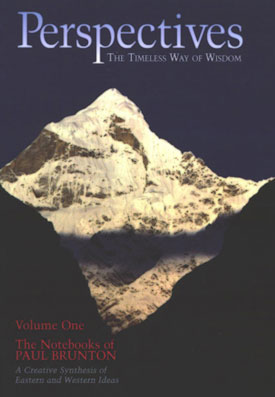













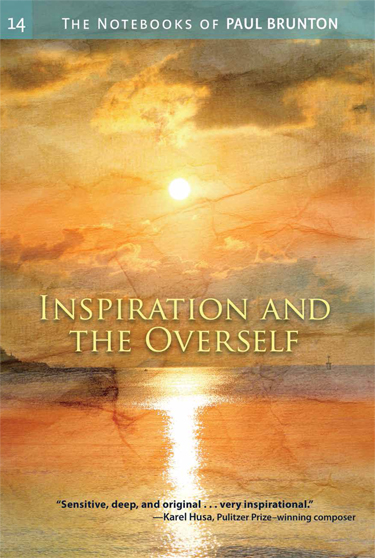
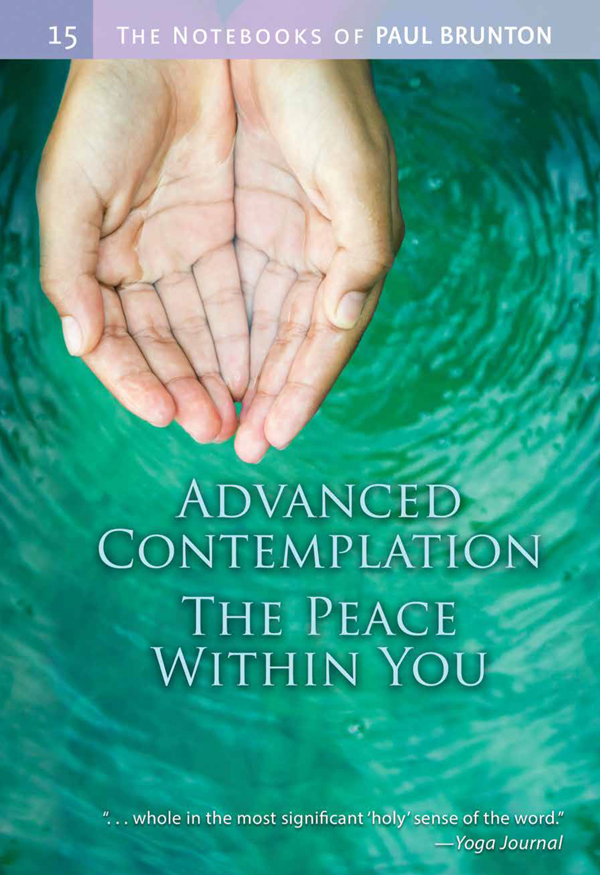








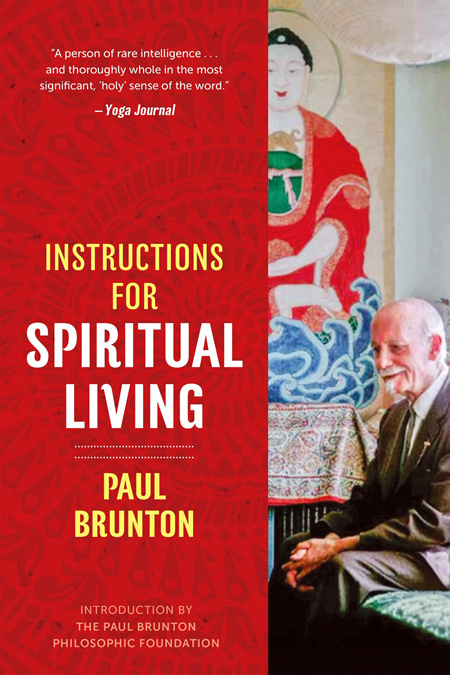






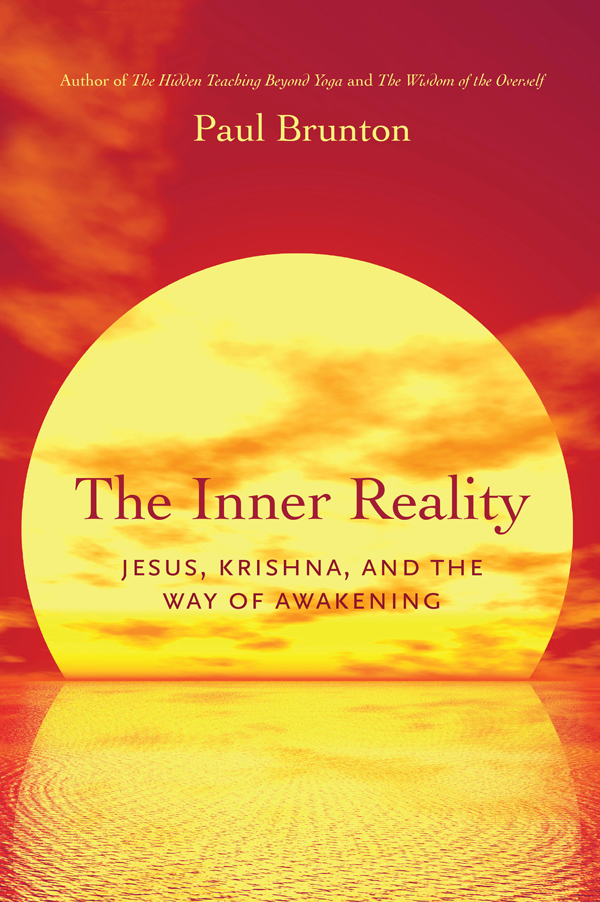



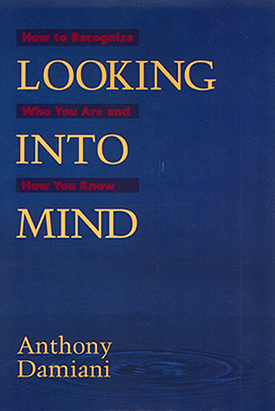




.jpg)
.jpg)
